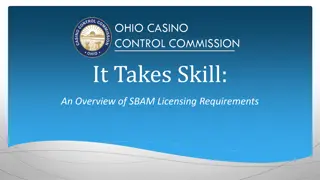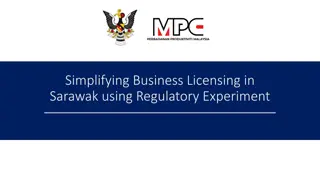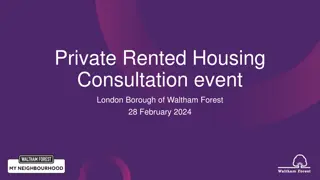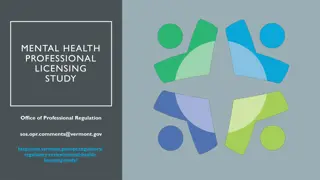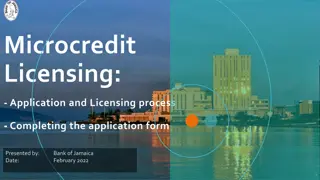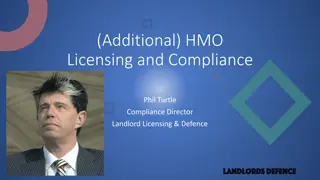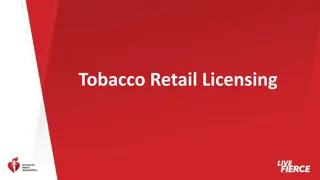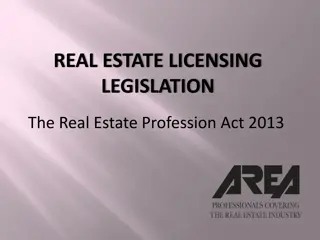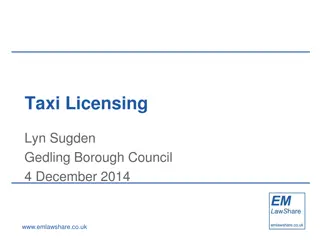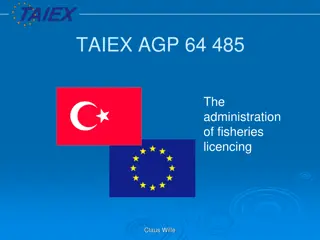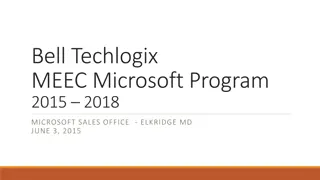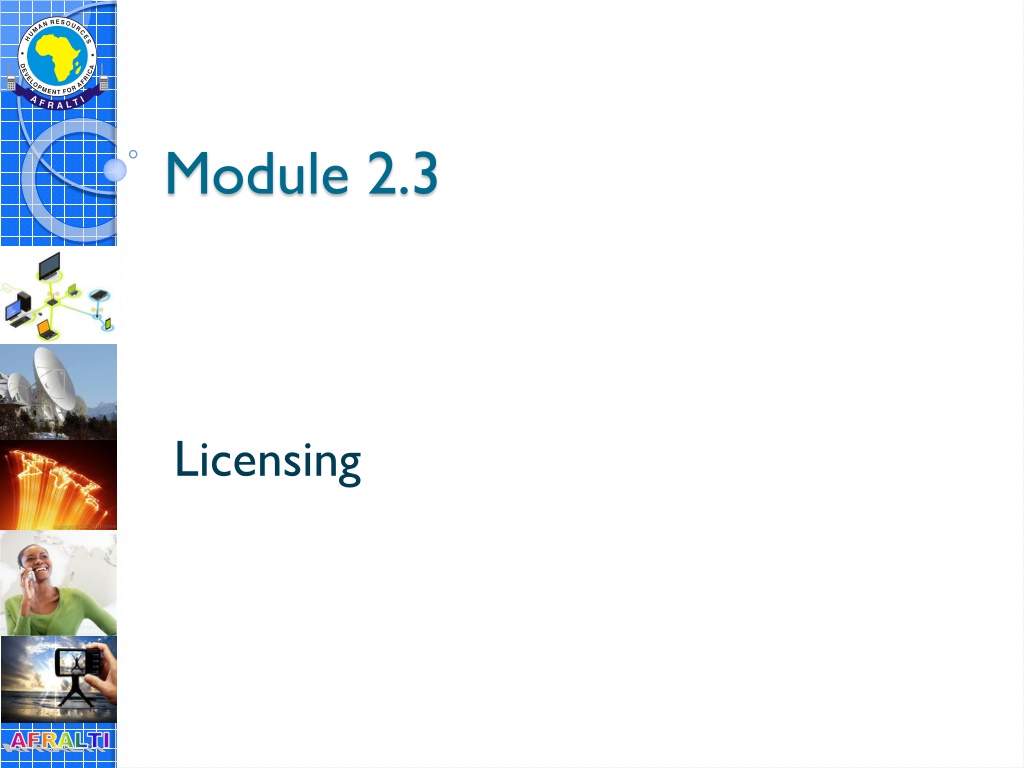
Understanding Licensing in Telecommunications Sector
Explore the world of licensing in the telecommunications industry, including the definition, objectives, regulations, fees, and more. Learn about the process of obtaining licenses, licensing authorities, and key considerations for new entrants. Understand the importance of licensing in promoting competition, protecting customers, and attracting investments in the sector.
Download Presentation

Please find below an Image/Link to download the presentation.
The content on the website is provided AS IS for your information and personal use only. It may not be sold, licensed, or shared on other websites without obtaining consent from the author. If you encounter any issues during the download, it is possible that the publisher has removed the file from their server.
You are allowed to download the files provided on this website for personal or commercial use, subject to the condition that they are used lawfully. All files are the property of their respective owners.
The content on the website is provided AS IS for your information and personal use only. It may not be sold, licensed, or shared on other websites without obtaining consent from the author.
E N D
Presentation Transcript
Module 2.3 Licensing AFRALTI
Licence A licence permits an organisation to provide services as defined by the terms and conditions of such a licence. New entrants generally obtain licences through a competitive bidding process whereby a Licensing Authority will award on merit for an agreed annual fee. AFRALTI
Licence Definition A government permit to carry out a defined action which without would be illegal Oxford Dictionary AFRALTI
Licensing Objectives Provision of a basic telecommunications service Expansion of existing service and USO (Universal Service Obligation) Attraction of private investment Controlling the market structure Establishing a framework for competition AFRALTI
Licensing Objectives Efficient use of scarce resources such as spectrum Generation of government revenues Protection of the customer Attraction of foreign investment and in particular hard currency AFRALTI
GATS Requirements WTO members must receive equal treatment to non-members All relevant laws must be published Licences must not constitute unnecessary barriers to trade Agreement on Basic Telecommunications (ABT) commitments ensure a minimum of basic service AFRALTI
EU Directive Three licences available: Individual Operators Licence General Authorisations Open Entry The process of issuing licences must take account of licencing and protecting the incumbent, introduction of new entrant, reallocation of spectrum and fees. AFRALTI
Licence Fee An annual sum of money paid to licensing authority: Permits an operating company to provide a defined service. Cover admin costs of allocating spectrum Cover other costs, disputes, compliance etc Modification of existing licences AFRALTI
Interconnection AFRALTI
Interconnection The WTO Rules state that Interconnection with Major Providers must be: At any technically feasible point in the network In a timely fashion On non-discriminatory and transparent terms AFRALTI
WTO Rules contd. Sufficiently unbundled to avoid special charges At non-traditional interconnection points if requestor pays charges Procedures to be followed must be made public Agreements reached must be made public AFRALTI
Pricing AFRALTI
Pricing Issues Rate of return Rate rebalancing International accounting rates AFRALTI
Pricing The price a provider charges consumers for his services will ultimately determine his or her market share. However provision of services at a non-viable business will result in failure to continue in the longer term. Clearly to introduce or maintain a service all operators must be able to achieve a minimum rate of return on their investment. Today to permit new entrants to survive and start up their businesses many regulators introduce a price cap on the incumbent and scrutinise potential areas of cross-subsidisation of services. It is important to recognise that any applied regulation of prices permits an operator to earn sufficient revenue to finance on-going operations and future investments. When implementing any regulation of pricing the considerations of finance, efficiency and equity must be taken into account and the regulator will need to make trade-offs to meet his goals between these somewhat conflicting elements. AFRALTI
Rate Rebalancing This is an area, which can be a considerable headache for a regulator. To introduce competition the regulator and operator must agree the cost of such a service. Invariably monopolistic incumbent government departments do not know how much it costs to provide a service. Moreover where they are known operators are reluctant to declare their hand, particularly with highly profitable services. Equally politicians are reluctant to change benefits to consumers which are likely to jeopardise their chances of re-election. An example is Barbados where local calls have been provided free of call charges and cost of provision has been heavily subsidised by the International Operator. Clearly the government wants to introduce competition but does not wish to see call charges applied to local calls. AFRALTI
International Accounting Rates In developing countries much has been said in recent years over the US rebalancing of outbound traffic. Developing countries have benefited from imbalance of traffic and have relied on substantial subsidies from the US. Whilst the ITU has reacted to the US action in support of the developing countries there advice is only recommended action. Moreover recent developments in technology have resulted in an increasing number of Internet users generating Voice over IP traffic which is clearly currently not subject to past or present International Accounting Rate agreements. Reductions in International calling rates will normally lead to an increase in International traffic levels be it IP or traditional infrastructure. AFRALTI
Clearly licensing, interconnection and pricing are key components of competition. AFRALTI


